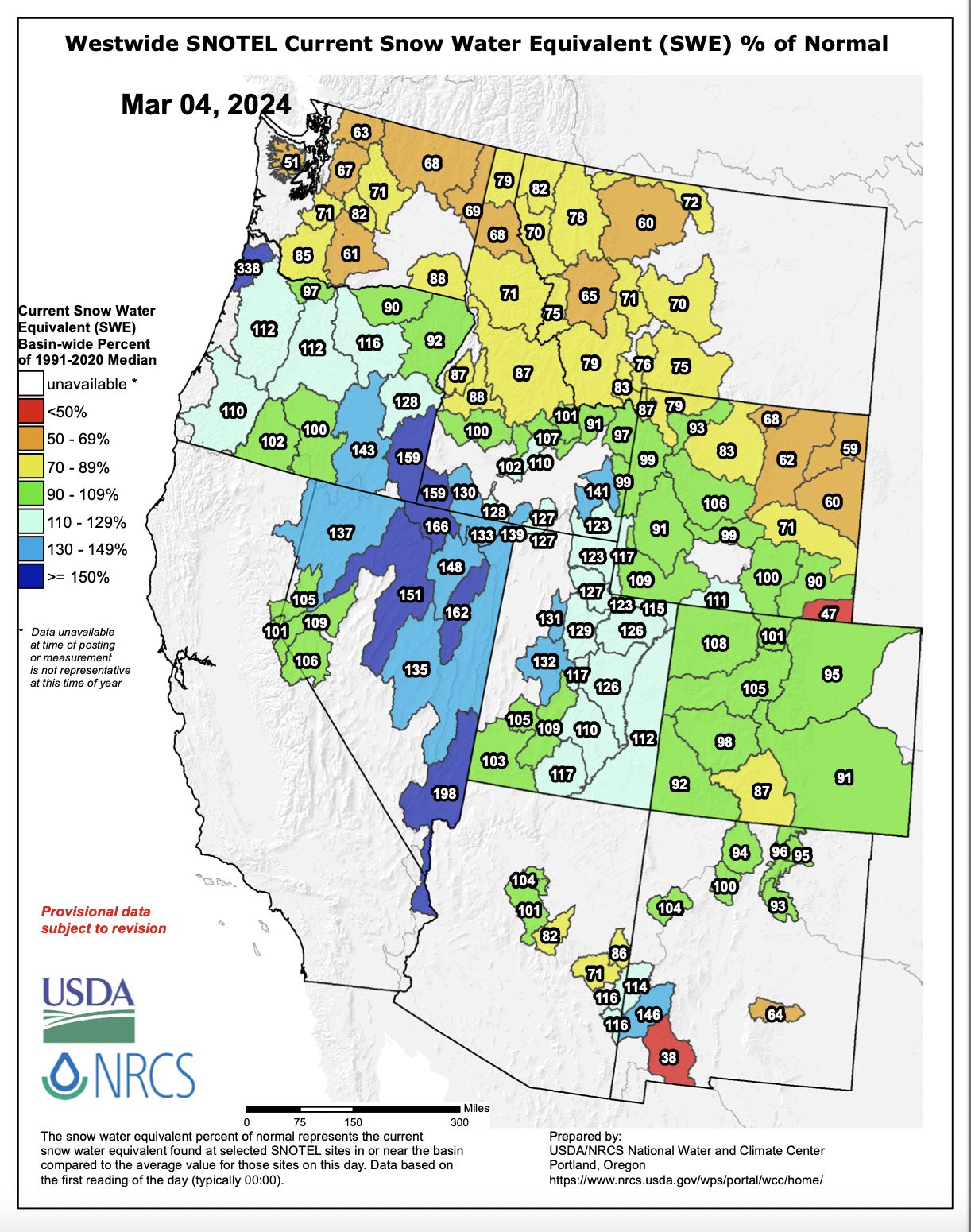
February was a good month for most of the West. The states with an already near-average snowpack at the start of the month like Utah and Nevada got several big storms that have put them well above average for this time of year, with Colorado also now sitting at a slightly above-average snowpack. But where the February snow really worked its magic was California and Wyoming, where at the start of February the states were sitting at below-average snowpacks statewide. Those series of storms changed that for them, bringing most of their statewide snowpacks to average or near-average levels by the end of the month. Oregon had a good February in terms of snowfall, too, and is sitting at an above-average snowpack right now as well.
However, parts of the PNW are still hurting for snowfall as El Niño has not been good to them this winter. Washington, Montana, and Northern Idaho are all reporting below-average snowpacks for this time of year, and most of the big snow the West received throughout February bypassed those areas. Those areas may finish the winter with what could only be dubbed as a ‘low snow year’, and the way the weather lines up in March will be a major determiner for the health of their snowpacks.
Meanwhile, the National Weather Service has forecasted a “cold and snowy” start to March, which many storms slated for the likes of California, Nevada, Utah, Wyoming, and Colorado. At the time of this writing, Lake Tahoe is coming off a massive storm cycle that dumped over six feet of fresh snow over the weekend according to the UC Berkeley Central Sierra Snow Lab, putting Tahoe above median to date for precipitation, snowfall, and snow water equivalent (SWE) as the area sits at 98% of its seasonal median peak SWE.
What will March have in store?